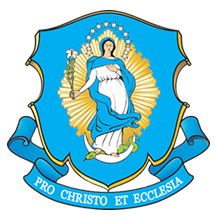
Saint Alphonsus was surrounded by a mysterious light and felt the building rock. He twice heard an interior voice say, “Leave the world and give thyself to Me.”
By Kimberly Bruce
He is considered the “Marian Doctor of the Church” and was declared the “Patron of all confessors and moral theologians” by Pope Pius XII. He is St. Alphonsus Liguori, whose feast we celebrate on July 30.
Born in Marianella, Italy, near Naples, in 1696, St. Alphonsus was the oldest of seven children. Incredibly bright, he excelled in both his studies and as a harpsichord musician.
At age 16, St. Alphonsus obtained his law degree, an unusual feat for such a young man. By 19, he had passed the bar and was practicing his profession in the courtrooms. By age 27, he was considered a leader amongst the Neapolitan Bar members.
Mystical experience
By age 26, the allure of St. Alphonsus’ successful life and popularity began to take precedence over his pious prayer life. He was known to never lose a case in legal court. The day he did lose a case, due to an oversight on his part, changed his life forever. Distraught and humiliated, he acknowledged both his error and arrogance.
Seeking God’s will for his life through prayer after his humiliating court loss, St. Alphonsus had a mystical experience. During a charitable visit to the Hospital for Incurables in 1723, he became surrounded by a mysterious light and felt the building rock. He then twice heard an interior voice say, “Leave the world and give thyself to Me.” Afterwards, he went to a local church, laid his sword before a statue of the Virgin Mary, and vowed to enter religious life. He became a novice two months later, joined the “Neapolitan Propaganda” (a group of missionary secular priests), and was ordained to the priesthood at age 30.
Saint Alphonsus worked as a missionary priest for six years. Then in 1731, a nun, Sr. Maria Celeste, had a vision of our Lord with St. Francis on His right hand and a priest on His left. A voice told her, “This is he whom I have chosen to be head of My Institute, the Prefect General of a new Congregation of men who shall work for My glory.” This priest was St. Alphonsus, who, in 1732, began the Congregation of the Most Holy Redeemer (called the Congregation of the Most Holy Savior during its first 17 years, and who are today called “The Redemptorists”).
Persecutions and betrayals
After the founding of his order, St. Alphonsus had a life rife with persecutions and betrayals. His companions began to abandon him as they did not want to live under his Rule, and the Congregation was rife with division. He suffered lifelong persecution from the Marquis Tanucci, the Prime Minister of Naples, and towards the end of his life, in 1777, he was tricked into signing a document with a new Rule devised by an enemy. After being made Bishop of Sant’Agata del Goti, under Pope Clement XIII, he suffered assassination attempts, as well.
Troubled with ill health, by the time the saint was 85, he was crippled, mostly blind, and deaf. He suffered from a raw wound on his chest made from the constant rubbing of his chin upon it due to his badly bent neck from rheumatic disease. He additionally suffered the “dark night” of his soul, replete with many interior struggles and trials.
Merciful confessor
Saint Alphonsus was most concerned with the spiritual ills of society and their damage to souls. He aimed to be a merciful confessor. He penned many moral, dogmatic, and devotional works to aid his flock and the Church. His famous work Visits to the Most Blessed Sacrament saw 40 editions in his own lifetime and greatly influenced the practice of Eucharistic Adoration. His Glories of Mary is one of the most widely used devotionals to the Blessed Mother. These and his many other writings were instrumental in his being named a Doctor of the Church.
A devotee of the Mother of God, St. Alphonsus had, on three occasions, a ray of light dart from a picture of Our Lady towards him while preaching at missions. Each time he fell into ecstasy. He was known to possess gifts for reading hearts, healing the sick, prophesying the future, and levitation in prayer. On Sept. 21, 1774, he fell into a trance and was present in spirit at the deathbed of Pope Clement XIV.
Pope Benedict XVI highlighted the importance of prayer to St. Alphonsus in his general audience on March 30, 2011. He quoted the saint:
God does not deny anyone the grace of prayer, with which one obtains help to overcome every form of concupiscence and every temptation. And I say, and I will always repeat as long as I live, that the whole of our salvation lies in prayer ... Amongst all devotions, after that of receiving the sacraments, that of adoring Jesus in the Blessed Sacrament takes the first place, is the most pleasing to God, and the most useful to ourselves. … Oh, what a beautiful delight to be before an altar with faith … to represent our wants to him, as a friend does to a friend in whom he places all his trust.
Saint Alphonsus died in 1787. After his death, his original Rule was restored and his Congregation reunited under one head, as he had prophesied. He was canonized in 1839 and declared a Doctor of the Church by Pope Pius IX in 1871.
Saint Alphonsus Liguori, pray for us!
{shopmercy-ad}
















